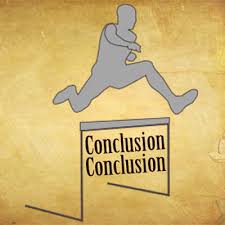
There is a time for everything, and a season for every activity under the heavens. – Ecclesiastes 3:1
During WWII General Douglas McArthur asked an engineer how long it would take to build a bridge across a certain river. “About three days.” The engineer was told to go ahead and draw up the plans. Three days later McArthur asked for the plans. The engineer seemed surprised. “Oh, the bridge is ready. You can cross it now. If you want plans, you’ll have to wait a little longer, we haven’t finished those yet.”
A new year tends to bring up a nostalgic notion in many people. They make resolutions to lose weight, quit smoking, go to the gym, diet, etc., – which on the surface sounds good but seldom lasts more than a few months. Sound familiar?
According to a survey about 45 percent of Americans make New Year’s resolution but only about 8 percent have success in keeping those resolutions. So where do you fit into this time-honored tradition of resolutions?
Instead of “New Year’s Resolutions” I prefer and embrace the notion of a lifestyle. While resolutions usually carry a certain intent, a lifestyle has a certain permanence to it.
I’d like to challenge you to think about the leadership lifestyle that you would like to develop, nurture, and commit yourself to living. Unlike a resolution ie. lose ten pounds and when done check it off; your leadership lifestyle is always under construction.
Here are three questions to ask yourself as a leader to help you think about what a leadership lifestyle means to you. On a sheet of paper answer these questions as you sketch out a blueprint for a leadership lifestyle and your intentional plan for growth.
What are my strengths?
Every leader I know has strengths. They have certain skill sets that come naturally to them or they have developed over time that serve them well. What are yours? It may be that you are a great people person or you are in your element in front of other people? It could be that you are a visionary and see the big picture before anyone else and you can help others see it.
Your strength is someone else’s weakness and your strength is going to compliment that person. Your strength is not meant to be hoarded but shared. Be humble and willing to add value to those in your circle of influence because when you do everyone benefits.
What are my weaknesses?
Every leader I know has weaknesses. We all do. For some the thought of speaking in front of a crowd is enough to make them lose their lunch. You may struggle with insecurities and self-doubts about your abilities and it holds you back from attaining all that you are capable of achieving. You may be too outspoken and a little rough around the edges and some people may not know to respond to you.
While we all struggle with weaknesses, we do not have to let them define us or prevent us from living a leadership lifestyle that makes a difference. It simply means that we are human and we are all trying to figure it out together.
Who can help me?
Every leader I know needs help. I know I do. And as leaders, we were never meant to go-it-alone. We need each other. And in my weaknesses, I can learn from your strengths, and from my strengths, you can perhaps learn a few things to help you along in an area of weakness. The idea is simple- find someone who can help you.
Proverbs 27:17 says, “As iron sharpens iron, so one person sharpens another.” And this is the leadership lifestyle I am committed to- growing in my strengths, growing through my weaknesses, and helping all I can along the way. Will you join me?
© 2016 Doug Dickerson
- Check out my speaking services tab at the top of the page. I am booking 2017 leadership workshops now.








